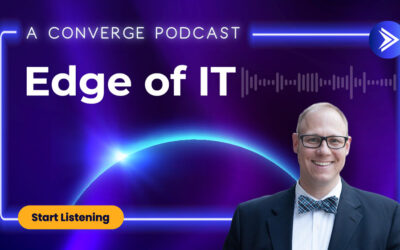Only about half of AI projects make it into production. This indicates a lot of room for improvement. Common roadblocks in a company’s AI journey include the complexity of enterprise data and IT operations data, and making sure the data helps you understand performance. Removing roadblocks is about governance, risk, and compliance, especially in data-sensitive industries such as finance or healthcare. Additionally, successful AI requires having a human in the loop, making sure AI augments human intelligence and is pulling domain expertise from different experts within your company. Furthermore, it requires a unified stack to build models, refine and govern them, and make sure they are performing consistently with infrastructure and application performance considerations. It all must come together.
Watsonx: IBM’s Solution for Integrated AI and Observability
IBM’s solution is Watsonx. IBM has spent years integrating AI into applications, including the ones most people are familiar with (e.g., mainframe, middleware, MQ, DB2), as well as storage devices, storage software, and databases. When IBM infuses these intelligent insights into their solutions, they are also incorporating intelligent operation data and best practices. Most companies need a world-class observability solution to tell them how their applications are performing and to provide deeper insight into being proactive about application performance. One of the key tenets of an observability strategy is leveraging the context of the metrics being collected. In the world of GenAI, the context is understanding how the different layers of the architecture behave and interact and how different resources are consumed.
Within the AI endeavor, there are three major objectives:
1. Remove silos through better insights
Use AI as a catalyst to break down silos within your organization, such as lines of business, functional departments, fiefdoms, or IT disciplines. For example, someone makes a config change on a router or switch, degrading the performance of other applications. You need to be able to stitch these different components and disciplines across network, databases, infrastructure, etc., to understand the true cause, even when the root cause originates outside of the silo. Use AI to pull data together to create new cross-silo views and eliminate operational blindness caused by the silos.
2. Use untapped data sources such as unstructured data
Focus on bringing together different data sources not traditionally part of your operations practices. For example, IT event management has traditionally relied on very structured data, pulling in metrics and alerts from monitoring tools based off static thresholds. Typically it takes an incident compromising a customer-serving application for IT to look for additional information and review logs or change tickets to find recent modifications. AI can pull together these sources of unstructured data into meaningful insights. It can also help you understand patterns in the data and then package the complete insights in natural language with the metrics to provide a holistic problem context. Additionally, AI can complete clustering and regression analysis and use temporal data to see patterns. These insights can supercharge teams that are writing corrective actions.
3. Use and optimize for specific sets of data
As AI models and apps develop at a rapid pace, we recognize that no single tool or solution can meet every need. We need to look at focused data on specific domains that are applicable to each AI model and optimize for each one as best we can.
Getting Started with Converge and IBM
Converge and IBM have a history of deploying successful AIOps and observability platforms, as well as being at the forefront of AI-powered business application development. We enable you to become an AI change agent in your organization and supercharge the AI journey. Converge’s 90-minute pre-flight assessment helps you break down barriers and confidently discuss the value of AIOps and observability. We help you identify priorities, understand stakeholders, build tangible first steps, and share learnings from our experiences.
AI is ready to empower your IT organization and provide new levels of visibility, insight, and observability throughout your cloud, app modernization, and AI journeys. Let’s take the first step together.
If you missed the previous posts in our “Observe and Operate Your GenAI Architecture” series, catch up on Part One: The GenAI Revolution and Part Two: AIOps in Action for GenAI Architecture.
This article is adapted from a presentation by Manoj Khabe, Converge Vice President, Observability, AIOps and Automation, and Brian Zied, IBM Senior Automation Technical Specialist. View a recording of the presentation here.




